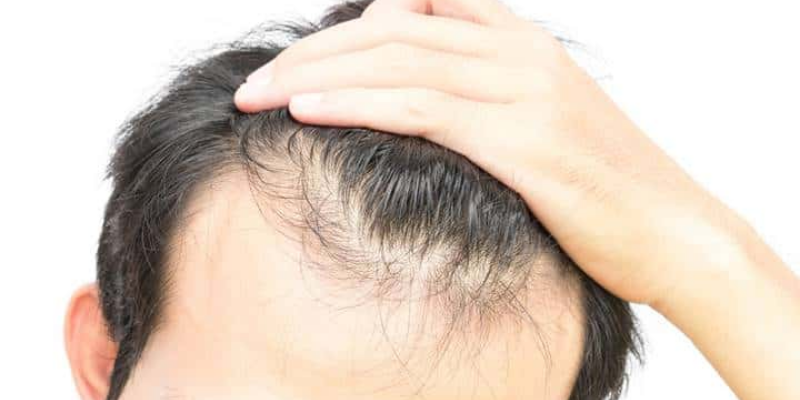Hair Transplant Results
Often, hair loss is just temporary, and the hair regrows on its own without the need for medicine. In other circumstances, though, hair loss can be permanent, so you should think about your hair care options. You can try a variety of strategies to try to stop hair loss or slow down hair thinning. If you’re looking for hair loss therapy, it’s critical to exercise caution during the hair transplant results. This is due to the fact that hair matures over time as it goes through several stages of development.
Because no two situations are same, the answer to when is the best time to get a hair transplant will be different. For example, contrary to popular belief, age is not a deciding factor in whether or not to undergo hair transplantation. However, there is a scarcity of diseases, as well as a demand to supply a dense donor field.
While there is no set age for hair transplantation, many doctors prefer to work with persons in their late thirties to allow for a more thorough examination of probable hair loss. Patients under the age of 25 are not good candidates for this procedure, even if they may undergo surgery, because hair loss does not stop until this age. It would make specialists less likely to predict hair loss.
When Will You Start To Get Hair Transplant Results?
However, the biggest difficulty that can arise from early intervention is that the patient begins to remove follicles from other non-transplanted places that are also affected by alopecia as a result of treatment. In such instances, our doctor may prescribe pharmacological elements such as minoxidil or finasteride to select individuals in order to repair hair loss before undergoing additional treatment. In either case, anyone who visits a specialized clinic undertakes a battery of tests to determine what causes hair loss, as this diagnosis identifies the kind of alopecia and, as a result, the best treatment for each individual.
After a series of evaluations, the best approach for treating the patient’s hair loss has been determined, and the patient has undergone surgery, the patient’s reservations are almost non-existent. This situation is very understandable, keeping in mind that each instance is unique. The genetic material on grafted follicles makes a significant contribution. Some people’s follicles grow quite quickly, while others grow far more slowly. Because follicles have the same genetic material and are impervious to alopecia, they will act similarly in the recipient location.
What Should You To For Getting The Best Results From Hair Transplant?
When it comes to how long you must wait before seeing the actual data, the answer is dependent on the fact that the findings do not appear from one day to the next. We won’t be able to see this new solid hair sprout from the grafting until the third month, which is known medically as the anagen phase. We will begin to comprehend the normalcy of the scalp and the ultimate product if we continue to observe the growth of new hair.
The development of new solid hairs that sprang from the grafts in what is known medically as the anagen phase doesn’t happen until the third month. We won’t be able to understand some normalities on the scalp and the consequences we’ll see until we start observing the creation of new hair. It’s important to remember that our new hair doesn’t start to grow regularly until the fourth month. We will be more or less ready to view the full results ten months after the surgery. The growth rate accelerates between six and nine months following surgery. After a year, we may see the ultimate result of the transplant. Once all of the grafted hair has sprouted appropriately.
Is Hair Transplant Permanent?
It should be noted that the grafted follicles are hair that can last a lifetime, regardless of whether the hair grafting is permanent or needs to renew little by bit with additional interventions. It means that they are just like any other type of hair. So, they will fall out and regrow after the natural hair cycle. That isn’t to say that the hair doesn’t age in tandem with the person who wears it. A lack of particular follicles may also exist. Although this has nothing to do with the alopecia or deficiency that led to the patient’s need for graft care.
Finally, the answer to the question of which parts of the human body is suitable for hair transplantation. The FUE or DHI method can use on locations other than the scalp, with a beard, eyebrow, and body hair transplants becoming increasingly popular. As a result of ongoing cosmetic advances, it is becoming increasingly popular in hair grafting centers. Please do not hesitate to contact our staff via phone or e-mail if you have any questions that we may have missed in this article.
Hair Transplant Aftercare
It’s crucial to understand that you’ll have to wait a long time to see the complete results of your hair transplant, so be patient. The severity of the consequences varies greatly from one patient to the next. You may notice that your “new” hair is starting to fall out a few weeks following your procedure. This is concerning since it may lead you to believe that your hair transplant was unsuccessful. But don’t worry; it’s very natural and generally always only transitory! After 3 to 6 months, you will see that new hair is starting to grow in its place. It takes a long time for your hair to mature. However, it normally takes 12 to 18 months before you can see the ultimate results of your surgery.
Our doctor can do a hair transplant using a number of different surgical procedures. As a result, depending on which of these treatments our doctor employs, the healing period may differ. However, in every circumstance, it is critical that you follow our doctor’s instructions to the letter during your recovery. Not only will you be able to heal comfortably, but you will also be able to achieve superior outcomes.
FUE Afro Hair Transplant Results
The FUE Afro hair transplant results are truly impressive. For many people who want a hair transplant African American one, these results represent a newfound level of confidence and self-esteem. The process is not only safe and effective but also discreet, meaning that those with the procedure can go about their daily lives without anyone being able to tell that they have had a transplant. Moreover, the results are permanent and natural-looking, allowing you to feel like yourself again without worry or stress. Additionally, this technique helps with the regrowth of hair loss due to previous procedures like strip harvesting or other damage caused by trauma or medical conditions.

The FUE hair transplant technique for Afro hairs is a minimally invasive procedure that offers excellent outcomes for those suffering from hair loss or thinning due to pattern baldness, injury, or other causes. Patients have reported good retention of the transplanted hair and are satisfied with the overall results after multiple sessions. For best results, it is recommended to follow up on your FUE Afro hair transplant procedure with a tailored aftercare routine that is specific to your needs and managed by a team of professionals.





